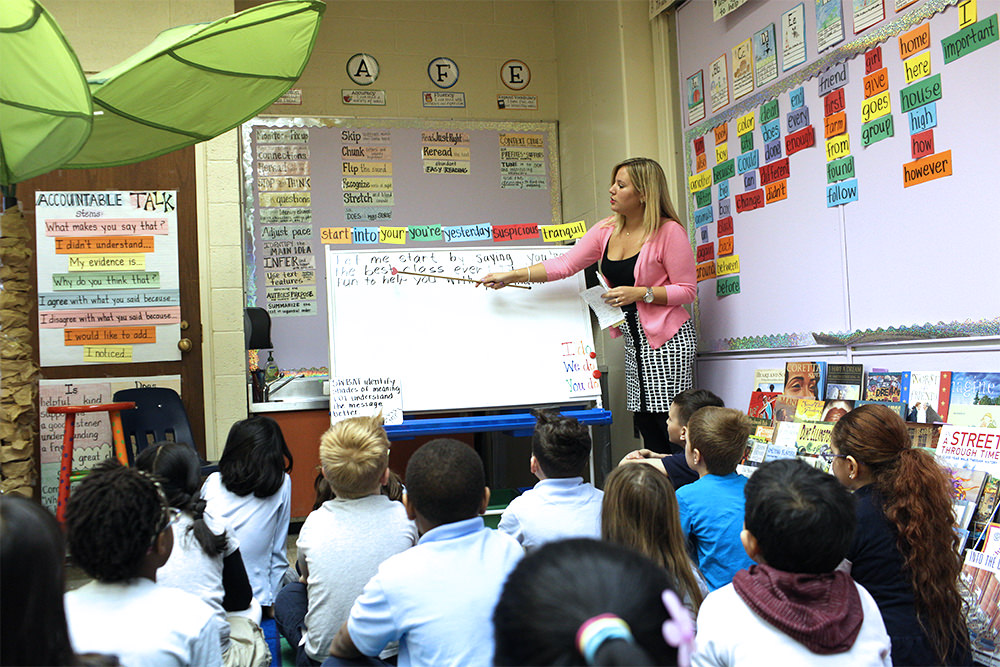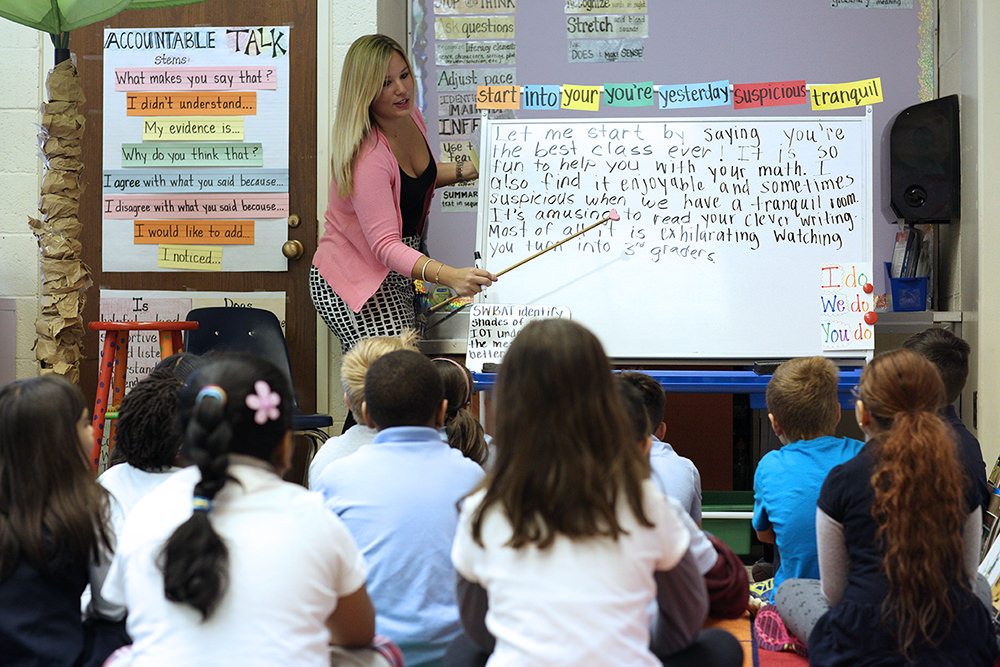Coaching Message Time Plus
Use the following resources as you work with teachers to enhance and grow Message Time Plus in their classrooms.
Coaching Conversation Starters

Reflective practitioners think deeply about their instruction — both the content and children’s engagement. Use these questions to guide your conversations with a teacher before and after a Message Time Plus lesson to enhance the lesson and help grow a teacher’s practice.
Lesson Planning
What is your primary objective? Why did you choose this objective? How will it help your children as readers and writers? How will you explain it to the children?
What language supports will you use to promote understanding? How will you support your ELLs and all children with the development of productive language? How will you explain/model the language you expect the children to use?
What will you do explicitly to help children take care of themselves and each other during the entire lesson? While you write? While you scaffold? What work have you already done to help children around understanding procedures and expectations?
What genre of writing best matches your primary objective? Is this the first time you are writing in this genre for your children? Have you exposed children to this genre in other areas of your literacy block (e.g., read aloud, Reading Workshop)? What can you tell children about this genre in one or two sentences that will help them as readers and writers when they work independently?
What topic will you choose to write about? How does the topic relate to what children have been learning? How do the topic and genre work together?
What are your high frequency words for this week? How many can you incorporate in the message? What chants or other methods will you use to review these words that engage children before the writing of the message?
What vocabulary words have you chosen to include? What child-friendly language will you use to define these words? How will you provide context for understanding these words?
What will you say in your think aloud to tie together the genre, content, and vocabulary of the message to support children’s decoding and comprehension of the message?
What will you do or say to encourage engagement and predictions as you write the message? How will you respond to their reading of the message?
Which children will you scaffold? What data do you already have about them that will help you know what they need to learn next? How can you support their language development through your planned scaffolding?
Tell me about your mini-lesson. How will it engage the whole group and deepen their understanding of the primary literacy objective? What language supports will you need to use to help your ELL children? What are your anticipated language outcomes? What materials will you need? Will you be creating or referring to an anchor chart?
Reflection & Action Planning

What do you think the children learned during the lesson? How do you know?
Was the content engaging for children? Were they engaged by the topic?
What predictions did you notice during the writing of the message? Which cuing systems (meaning, visual, or semantic) did the children rely on to make these predictions?
Did whole group fluency improve with each reading of the message? How do you know?
What skills did children demonstrate during scaffolding? Did anything surprise you?
Were the children engaged during the mini-lesson? How could you tell?
How was your pacing? How long was the entire lesson?
Reflect on the classroom culture during the lesson. Were the children taking care of themselves and others on the carpet? What problems arose? Did children solve problems with little or no support?
How else could you use the message with children today (for a center, during writing or reading workshop, for home-school connection)?
What did you learn about your children during this lesson? How will this inform future messages?
Viewing Lenses
When you are observing a teacher there are several different viewing lenses you might choose to focus your observation and post-lesson conversations. If you are watching a teacher who already does MTP, and you want to get a sense of their instruction, then use the MTP General Viewing Lens to record your notes and questions. On the other hand, in most other cases, it helps to have a specific viewing lens to focus your observations. Here are some ideas for focused viewing lenses for Message Time Plus:
| Focus Question | What to Note |
|---|---|
|
How did the teacher engage children in building automaticity with high frequency words? |
|
|
How did the teacher introduce Tier II or Tier III vocabulary words? |
|
|
How did the think aloud support readers to be successful in reading the message? |
|
|
How did the teacher engage the children during the writing of the message? |
|
|
How did the teacher support individual children during scaffolding and engage the group while scaffolding? |
|
|
Did the mini-lesson engage all children and advance the primary literacy objective? |
|
|
How did the teacher work to help children take care of themselves and each other during the lesson? |
|
Classroom Culture Viewing Lens - MTP
Use this resource to guide your observations and post-lesson conversations around Classroom Culture.
General Viewing Lenses - MTP
Mirroring the lesson template, use this resource to guide your observations and post-lesson conversations.
High Frequency Words Viewing Lens - MTP
Use this resource to guide your observations and post-lesson conversations around high frequency words and MTP.
Mini-Lesson Viewing Lens - MTP
Use this resource to guide your observations and post-lesson conversations around the mini-lesson in MTP.
Scaffolding Viewing Lens - MTP
Use this resource to guide your observations and post-lesson conversations around scaffolding in MTP.
Think Aloud Viewing Lens - MTP
Use this resource to guide your observations and post-lesson conversations around the think aloud in MTP.
Viewing Lens Options - MTP
Use this resource to guide your observations and post-lesson conversations around MTP.
Vocabulary Viewing Lens - MTP
Use this resource to guide your observations and post-lesson conversations around vocabulary in MTP.
Writing the Message Viewing Lens - MTP
Use this resource to guide your observations and post-lesson conversations around the writing of the message in MTP.

Comments
No comments have been posted yet.
Log in to post a comment.